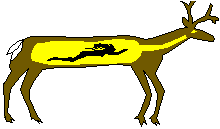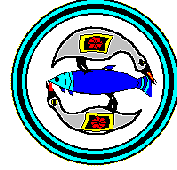




|
Reprinted from Vol 1, issue 1, Spring, 1991, Indigenous Woman, the quarterly magazine of Indigenous Women's Network. Subscription is by joining. Fee is $15/year for indigenous women, who join as voting members, and $25 for supporting non-voting memberships, which may be non-Indian women, men of any ethnicity, libraries and institutions. Subs/memberships from: IWN P.O. Box 174 Lake Elmo, MN 55041 612/777-3629 Don't be impatient. The cookbook part's at the end, here. A Metis community near the town of Burleigh Falls, Ontario, has become the subject of increasing interest. Intrigue has been aroused within government departments, public areas and other Native communities. A group of dynamic women from this small (population 150) Native community is the center of this sudden burst of itnerest. Committment, determination and a positive attitude aptly describe the qualities the membership exemplifies as they have worked to build the structure that has become known as the Lovesick Lake Native Women's Association. The following is their story. In 1982, Bev Brown, a Native woman from the Metis community, enrolled in a Native Economic Development and Small Business course at a nearby college in Peterborough, Ontario. Life from that time on has never been the same for the Metis village. Bev's educational experience made her aware that the lack of development is unlversally felt by Native communities in North America, just as it is evident in Burleigh Falls. The same factor can be seen diminishing the slef-confidence of native women and affecting their ability to view themselves as able to excell in the area of development of their communities. Bev Brown would have many supporters for her statement "I was shy and introverted, I had never really been outside my community." The events of the following years would do much to change this obstacle. Early in 1982, she called on anyone interested in working together, to meet, plan and discuss how a women's group could contribute to the betterment of life in their community. Brainstorming revealed that "organization" was primary to establishing a future direction for their group. Bob Anstey, a friend and consultant was very supportive and helpful in the initial planning stages. The group acknowledges his input with much gratitude. The Lovesick Lake Native Women's Association was formed in 1982. The Association originated with a directorship of seven, no money and no office, and was faced with the question "What is our goal and purpose?" The first major concern was for the youth of the community. The youth were seen as representatives of the community's future. Solutions needed to be found for the underlying problems indicated by such statements as "there's nothing to do and no transportation." These remarks were frequently heard amongst the youth. The task at hand was to establish an overall long term goal that was to become the "mission" of the Association. This mission was "to own and operate a Native Heritage Camp for youth." Other objectives were also identified, such as economic development, education and employment opportunities. These were added to the list of concerns of the Association The Association itself was not without its problems. The directorship dwindled down to three members: Bev Brown, Brenda Anstey, and Marlene Byrd. Bev Brown described the situation facing the Association when she said "We have had our problems like everyone else, so we had to take the ball and run with it." Using a combination of available government grants, as well as various fundraising efforts in the community, they established a means of supporting ongoing economic and social activities. In doing so, they met their short-term objectives, while continuing to work toward keeping their long-term goal at the forefront of any plans. Keeping their goal at the forefront has reinforced the strength of the Associations work over the years. 1983: The idea of collaborating on a cookbook based on wild game was developed as a fundraising project. Canadian Employment and Immigration approved the project as a training program. (PG NOTE: for Americans, this is similar to CETA and JTPA). Six women were hired to collect the recipes from native and rural sources. The result was 2000 recipes originating from all over Ontario. The Wild Game Feast was held to promote further fundraising. Promotion of the Native Heritage Cookbook was increased. As a result, the cookbook was published on a national scale. 1984: The first of thee cookbooks was published. The Lovesick Lake Native Women's Association records reveal that their sales realized $57,000. The cookbook has proven to be a large part of the Association's fundraising fforts. A provincial environmental grant was also received. This, with some work with the Ministry of Natural Resources, enabled the Lovesick Lake Native Women's Association to negotiate land for use as a small summer camp. Am interim measure to allow the association to gain mujch needed experience, as well as administration knlwledge towards their efforts that would be required in their work with the youth camp plans for the future. 1985: A major survey of 25 communities was conducted to support the Native Heritage Camp as a viable project. As a result of the survey, the Provincial Ministry of Citizenship granted $250,000 the initial site development and land purchase for the camp. Increased credibility and an excellent public relations between the Lovesick Lake Native Women's Association and other organizations helpeed the project move along. The Association purchased 247 acres on the Missisaugua River, and site development has commenced. Employment is a direct result for the community, and the Association now operates out of the (camp) administration building. Camp Tuc Qua Shin, meaning "He or she comes" is reflective of all the people who helped get this project off the ground. The Lovesick Lake Native Women's Association continues their work, and are available to do presentations in different communities about organizing and building a project. The Cookbook is also available for $14 postpaid. For more information: Bev Brown Lovesick Lake Native Women's Association General Delivery Burleigh Falls, Ontario, KOL 1KO
PG Postcript: Now, you can order that cookbook just by punching in your credit card, on the Native Book Centre's web page, and see what 5 years of progress -- with the camp in operation for their youth -- has meant. To me this history of determined and tenacious women makes that cookbook something that belongs on every Native person's bookshelf, whether or not you ever set eyes on a deer or any other wild game. Similarly, for schools, this cookbook is (or could be) a social studies text. You'll find it listed well down the page on Native Book Centre's menu, as Rural and Native Heritage Cookbook, Lovesick Lake Native Women Association, Toronto, 1985, 160 pages and index, soft cover, $11.50 US / $13.00 CAN What a contrast -- these determined women and their years of effort, their modestly-produced and modestly-priced cookbook, compare it to the one that immediately follows it in the cookbooks section of the RECIPES page, the lavishly-illustrated, high-priced for-profit glamour jobbie. That one's nice, it's gorgeous and most of the recipes are pretty good too. But.... The Lovesick Ladies Cookbook doesn't need glamour. It is itself a piece, small but tasty, of Native history. A all-round good buy for school or personal bookshelf (whether or not you cook), easily done from the Canadian Native Book Centre., use either the browse list (foods) or search, using "lovesick" as AUTHOR. They have many other Native books you'll probably like, too. This one, though, helps keep that Native Heritage Camp going, which those ladies worked 14 years to get for their kids. Why were they so persistent? You're not Indian or you would know. The kids, who had "nothing to do" drink of course, that happens everywhere in Indian Country. There's violence, suicide, self-destruction. The cookbook and the heritage pride camp it supports is thus a matter of life and death. That's why they stuck with it and that's why you should buy one even if you're a total vegetarian. Subscription and other info about Indigenous Women's Network, and the IWN magazine is available here. |
|---|
 TOP of TOP of Page |
 --Native --Native RECIPES page |
 --MAIN --MAIN MENU |
|---|
Webmistress --Paula Giese.Text and graphics copyright 1995.
Last Updated: 6/7/97